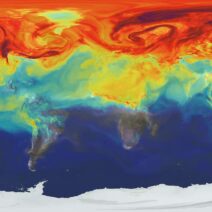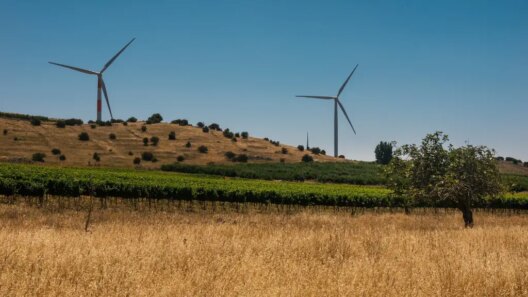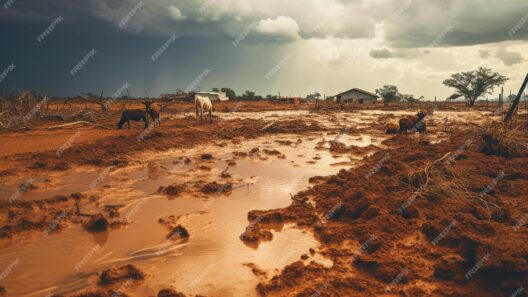Global warming, a consequence of rising atmospheric concentrations of greenhouse gases, presents profound ramifications for both flora and fauna across the globe. Understanding how global warming impacts animals and plants requires a closer examination of the intricate web of life that connects all living organisms. From the melting of polar ice caps to shifting climatic zones, the effects of global warming manifest in myriad ways, eliciting a chain reaction, often referred to as the ripple effect, that reverberates through ecosystems.
One of the most alarming impacts of global warming is habitat loss. As temperatures rise, certain ecosystems, particularly polar and alpine regions, are shrinking dramatically. Arctic animals like polar bears and seals depend on sea ice for hunting and breeding. The dwindling ice not only threatens their survival but also disrupts the food chain. As these apex predators struggle to find resources, their prey, such as seals, may also decline, further destabilizing the ecosystem.
The temperate zones are not exempt from afflictions. Many animals exhibit phenological changes—altered timing of biological events such as migration, breeding, and flowering. For example, birds that migrate south for winter may find their traditional wintering grounds inhospitable due to warmer temperatures. This can lead to mismatches in timing; if insects hatch earlier due to rising temperatures, birds that have not yet arrived may miss the crucial food supply necessary to feed their young. Such mismatches disrupt the delicate balance between species and can lead to declines in animal populations.
Another significant impact of global warming is the alteration of plant communities. Changes in temperature and precipitation patterns affect plant growth, distribution, and biodiversity. Many plant species are unable to migrate or adapt quickly enough to shifting climates. Consequently, temperature rises can lead to a decrease in plant diversity. A singular focus on a narrower range of species can render ecosystems more vulnerable to diseases and pests that thrive in altered conditions, thus diminishing ecological resilience.
In aquatic ecosystems, global warming induces a multitude of stressors. As ocean temperatures rise, coral reefs—a vital habitat for thousands of marine species—experience bleaching events. When corals expel the symbiotic algae that provide them with energy, they become more susceptible to disease and mortality. This not only endangers the corals but also the diverse marine life that relies on reefs for shelter and sustenance. Fish populations may decline as their habitat deteriorates, further impacting human communities reliant on these resources for food.
Furthermore, global warming amplifies the prevalence of invasive species. Warmer temperatures create favorable conditions for non-native species to thrive, often at the expense of local biodiversity. These invasive species can outcompete native species for resources, leading to declines or extinctions. For instance, in freshwater ecosystems, invasive plants like hydrilla can choke waterways, disrupting native aquatic life and altering the ecosystem’s balance.
The ripple effects extend into the terrestrial realm as well. Increased temperatures can escalate the frequency and intensity of wildfires, altering habitats and threatening endangered species. Species adapted to specific fire regimes may find their existence jeopardized as the fire frequency surpasses their natural evolutionary coping mechanisms. For instance, certain trees in fire-prone areas rely on periodic fires to regenerate; however, they might not survive increased fire intensity, impacting entire forest ecosystems.
Global warming also disrupts the delicate climate zones that plants and animals depend upon. Species that have evolved to occupy specific niches may find themselves in unsuitable environments as climatic conditions shift. Take the case of alpine plants that grow at high elevations; as temperatures rise, they may be forced upward, potentially finding themselves with nowhere else to migrate. This could lead to the extinction of several species that are unable to adapt quickly enough.
The interplay between climate change and evolutionary processes is another critical factor to consider. Rapid changes in climate can outpace the adaptive capacities of many species, leading to reduced genetic diversity. This lack of diversity can result in populations that are less resilient to diseases, environmental shifts, and other stressors. A decrease in genetic variation can ultimately jeopardize the long-term survival of species.
Humans, as integral components of these ecosystems, bear witness to the repercussions of global warming. Agricultural practices are increasingly disrupted as changing weather patterns affect crop yields. Pests that thrive in warmer climates could decimate traditional crops, putting food security at risk. Therefore, the implications of global warming on biodiversity are not just an environmental concern; they intersect with socioeconomic realities that demand urgent action and awareness.
Mitigating the implications of global warming on plants and animals requires a multifaceted approach. Conservation efforts must focus not only on preserving existing habitats but also on enhancing ecological connectivity to facilitate species migration. Restoration projects aimed at rehabilitating damaged ecosystems can help bolster the resilience of both plant and animal communities. Additionally, integrating climate change considerations into land-use planning and agricultural practices can foster more sustainable interactions between humans and the natural world.
In conclusion, the impacts of global warming on animals and plants reverberate through ecosystems in ways often unforeseen. The ripple effect of habitat loss, altered phenology, and shifts in species interactions underscores the urgent need for collective action. Understanding and mitigating these impacts is essential, as the intricate balance of biodiversity is not only vital for the environment but is also fundamentally intertwined with human well-being and the health of our planet.







